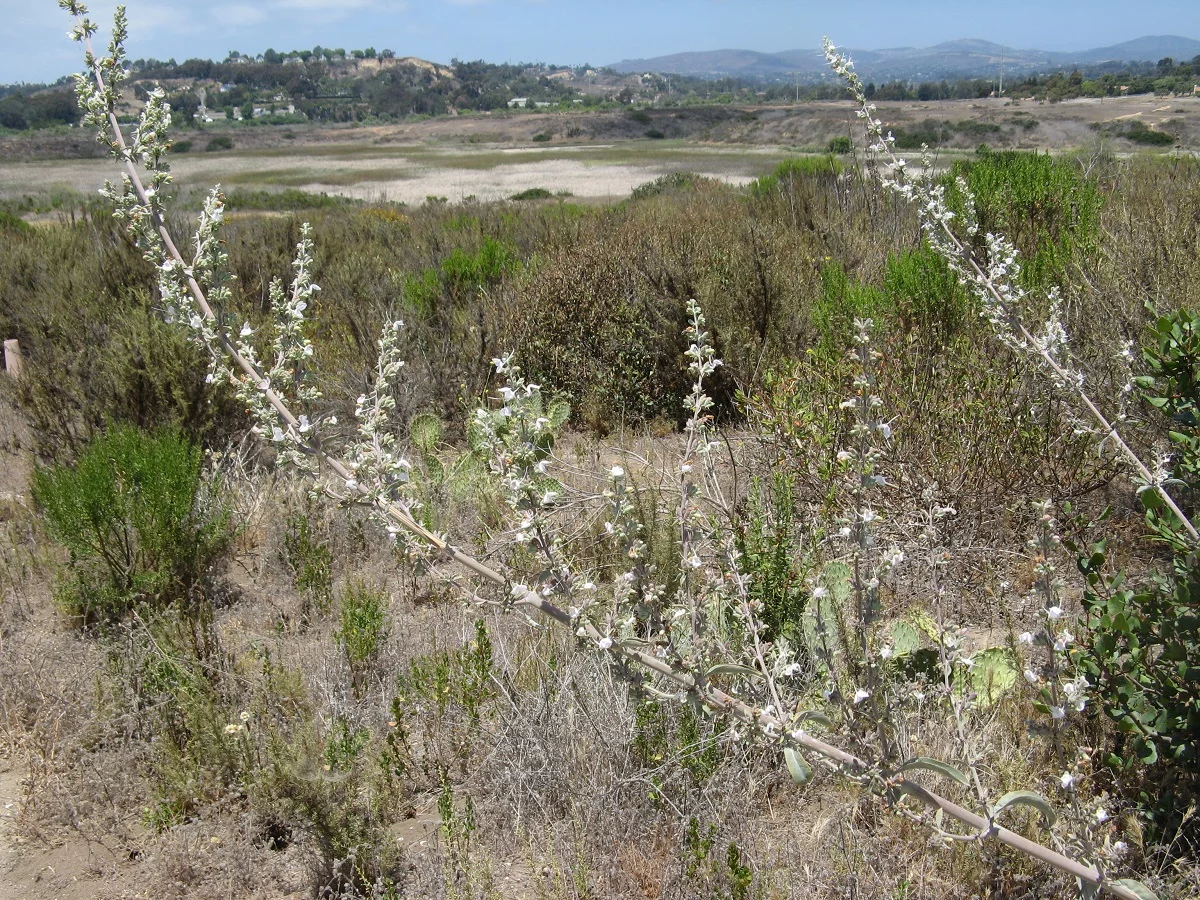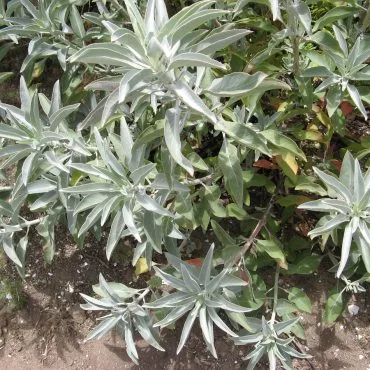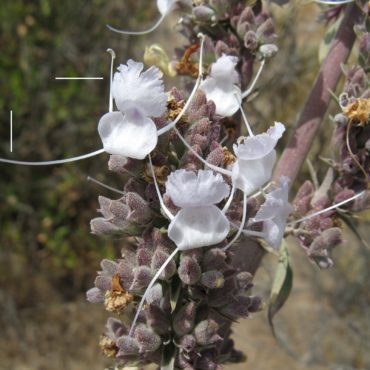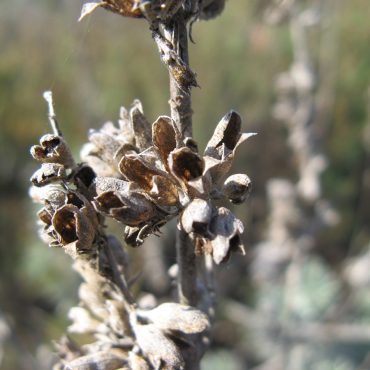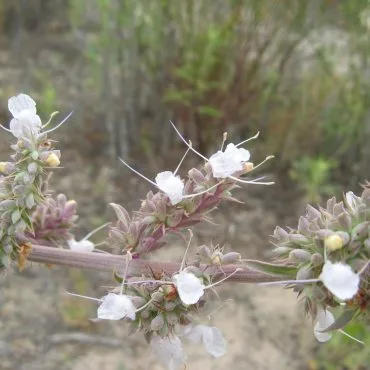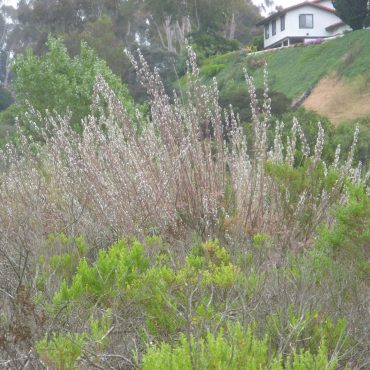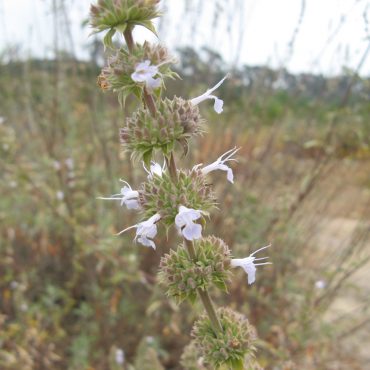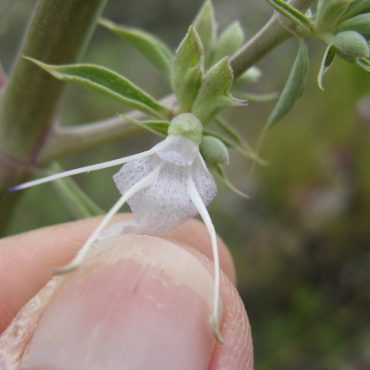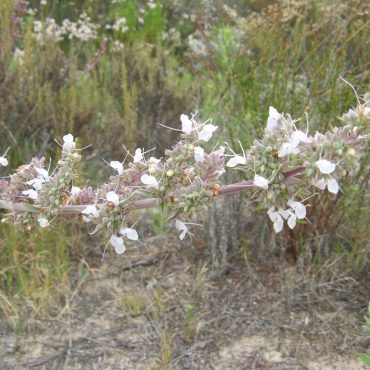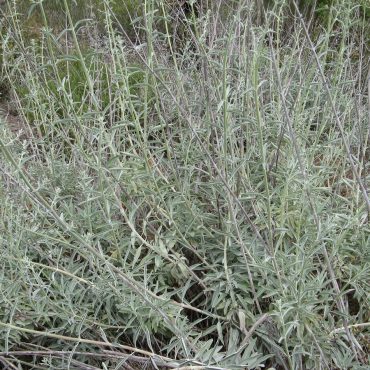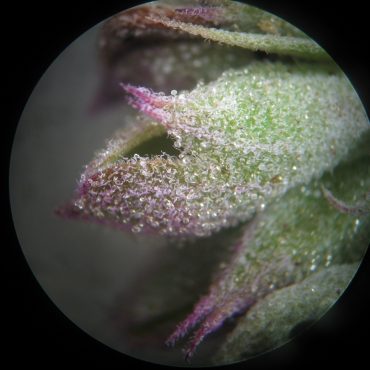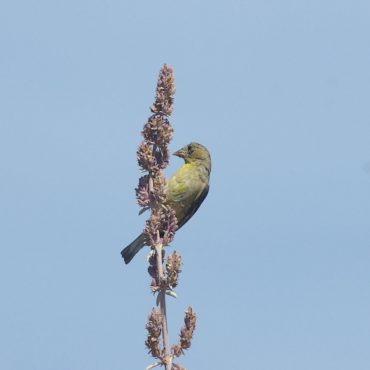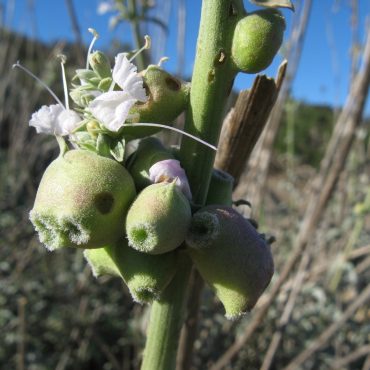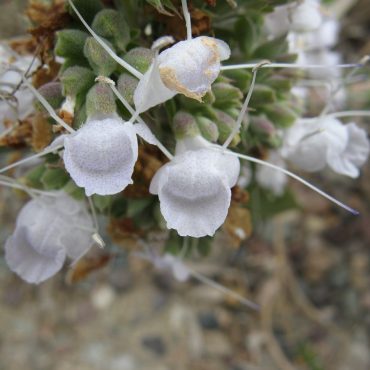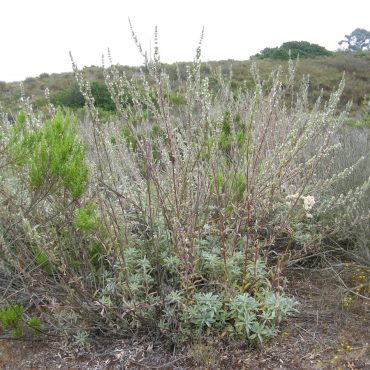When not in bloom, white sage is a perennial, low-growing, rounded sub-shrub usually less than three feet in height. There are numerous basal branches with dense clusters of pale gray, slightly thickened leaves that have a smooth, almost rubbery feeling. Leaves are paired along the stem with petioles that wrap the stem. They are ovate to broadly lanceolate, tapered at the base, with an acute tip, generally 1½ – 4¾ inches (4-12 cm) long, and with a delicately scalloped margin. Leaves are covered with small white hairs, but these are very difficult to see without magnification. The entire plant, especially the flower clusters, is glandular and excretes a strong-smelling resinous substance that some find unpleasant. White sage often goes dormant during late summer.
Starting in late winter, stems begin elongating into long, straight, sparsely-leafed flower stalks that may reach six feet in height, making white sage our tallest local native sage. Unlike the stems of most sages, white sage stems are cylindrical. Unlike the flowers of most sages, flowers are not in discrete whirls but in small paired clusters along the top of the flowering stalk. The calyx is two-lipped. The calyx and flower stem are more or less tinged with red. Flowers are white, white dotted with lavender or pale lavender, strongly bilateral, about 1/3 inch (0.8 cm) across. The five petals are fused at the base, expanding outward into two lips. Two petals form a very small upper lip. Lower petals form a large, frilled, three-lobed lower lip, initially folded back over the upper lip before bending out and down. In a young flower, the folds of the lower petal close the throat; the folds relax with age. There are two long stamens extending at angles out and away from the flower. Stamens mature before the pistil. The pistil has a superior ovary, and one style with a forked, often purplish tip. The long style extends to the side of the flower. The major bloom time is April to July.1
Each flower may produce up to four nutlets, which develop within the dry tube of the calyx. The tall, dry flower/seed stalks persist through the winter.

